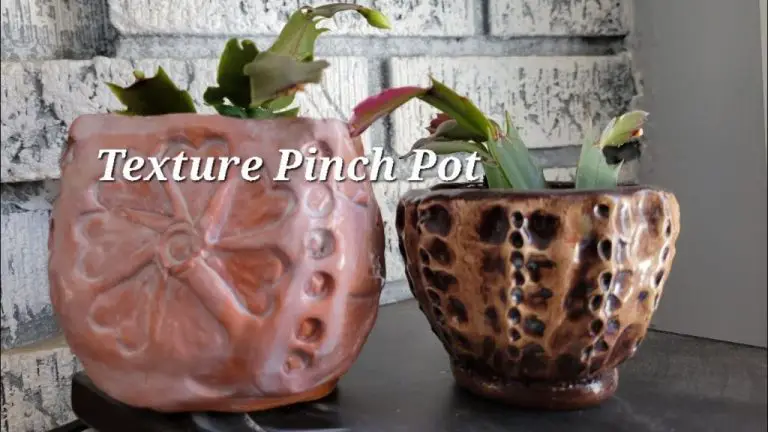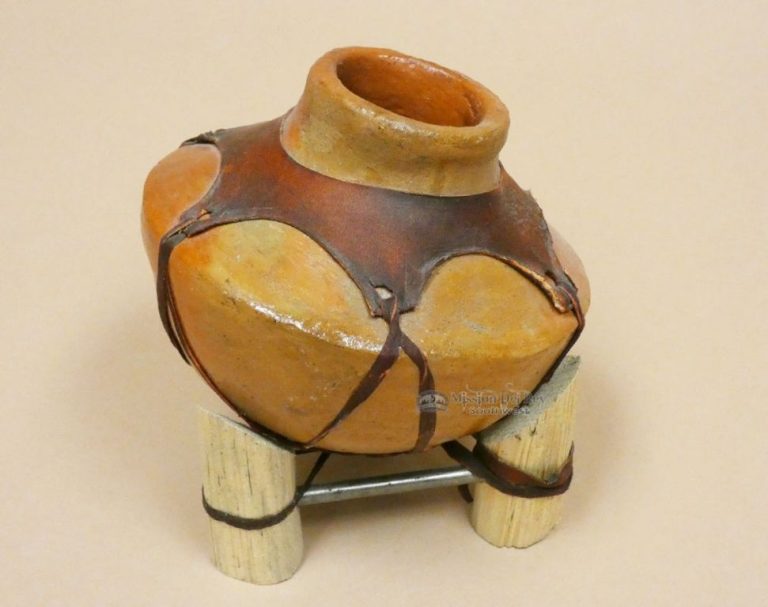What Colors Make Clay Brown?
Clay is a natural material made up of fine-grained minerals such as kaolinite, illite, and montmorillonite. When clay is fired in a kiln, it undergoes physical and chemical changes that harden it into a ceramic material. Clay can come in a wide variety of colors depending on its mineral composition and any additives introduced. One of the most common colors of clay is brown.
This article will explore what makes clay turn brown, the different shades of brown that can be achieved, and considerations when working with brown clay. Understanding what provides that rich, earthy brown tone can help ceramic artists select the right clays and colorants for their projects.
Primary Brown Clay Colors
The main color additive that makes clay turn brown is iron oxide. Iron oxide is a natural mineral pigment that produces rich earthy brown tones. The two primary forms of iron oxide used in ceramics are raw umber and burnt umber.
Raw umber contains natural hydrated iron oxide and manganese oxide. It produces a dull, raw, earthy brown color in clay. Raw umber has good hiding power and is very stable at high temperatures.
Burnt umber contains calcined raw umber that has been roasted to drive off water. It produces a deeper, warmer brown tone compared to raw umber. Burnt umber is also very stable at high firing temperatures.
Both raw umber and burnt umber are inexpensive brown clay colorants derived from iron-rich clay deposits. They produce rich brown tones in clay bodies ranging from tan to chocolate brown.
How Iron Oxide Makes Clay Brown
Iron oxide is one of the most important chemicals for producing brown clay. It contains iron and oxygen atoms bound together in a crystalline structure. The iron atoms have the chemical symbol Fe, while the oxygen atoms have the symbol O.
There are several forms of iron oxide found in nature, including hematite, magnetite, and limonite. These minerals vary in color from red and black to brown and yellow. When iron oxide is mixed into clay, it causes a chemical reaction that turns the clay brown.
Specifically, the iron oxide undergoes oxidation and reduction reactions. Oxidation causes the iron atoms to lose electrons, while reduction causes them to gain electrons back. The shuffling around of electrons alters the structure of the iron oxide crystals, changing their color and staining the clay body.
The exact shade of brown depends on the type and concentration of iron oxide used. Small amounts create light tans and buffs, while higher quantities make dark browns and chocolate hues. The iron oxide integrates into the clay body during wedging and firing, resulting in an even brown color throughout.
Using Raw Umber
Raw umber is a natural clay containing iron oxide and manganese oxide that produces a rich, dark brown color. It has been used since prehistoric times as a pigment for painting and coloring materials. Raw umber adds a range of dark brown hues to clay that can add depth and natural variation.
When added to clay bodies, raw umber creates earthy, organic brown tones. It can be used on its own to achieve a dark brown clay. Adding smaller amounts of raw umber to white or neutral clays results in softer, lighter browns. The natural concentrations of iron oxide and manganese oxide in raw umber mean it imparts deep, oxidized shades of brown.
Raw umber blends well with other brown clay additives to produce an extensive range of brown shades. Combining raw umber with red iron oxide can make reddish browns, for example. Raw umber also goes well with burnt umber, another traditional brown pigment, for flexible warm brown tones.
The intensity of the brown coloration depends on the amount of raw umber mixed into the clay. More raw umber produces deeper, richer browns while smaller quantities make lighter earthy browns. Testing with small batches is recommended to achieve the desired brown shade.
Using Burnt Umber
Burnt umber is a dark brown pigment created by heating raw umber, which is clay containing iron oxides and manganese oxide. The process of burning the raw umber changes the color from a yellowish raw umber to a darker, redder brown due to the chemical transformations that occur.
Burnt umber has some key differences from raw umber:
- It has a darker, richer brown color compared to natural raw umber.
- The pigment has a higher tinting strength and color intensity.
- Burnt umber is more transparent than raw umber.
- It produces stable, lightfast shades.
When added to clay bodies, burnt umber produces a range of deep, warm brown hues. The amount added will determine the depth of color – small amounts create earthy, terra cotta tones, while higher quantities produce chocolate browns. Its intensity and transparency make burnt umber excellent for creating fluid gradients of brown when blended with other colors. As a natural pigment, burnt umber provides an organic, earthen character to brown clay.
Other Brown Clay Additives
In addition to iron oxide, there are some other metal oxides that can produce brown tones in clay:
Manganese dioxide – Adding small amounts of manganese dioxide can produce brownish-black colors in clay. It helps deepen and enrich iron oxide browns. Too much manganese dioxide will make the clay almost black.
Chromium oxide – Also known as chromate, chromium oxide produces an olive-brown color in clay. It is sometimes used in combination with iron oxide to achieve brown clay with greenish undertones.
Cobalt oxide – This additive produces a range of warm, earthy browns. Cobalt oxide-browned clay fires to a rich chocolate brown. Too much cobalt can make the clay almost black.
These metal oxides can be used alone or in combination with iron oxides to produce an array of natural, earthy brown clays.
Achieving a Range of Browns
There are a few techniques potters can use to achieve a wide spectrum of brown clay colors:
Mixing Additives
By mixing different amounts of iron oxide, umber, or other brown mineral pigments, clay artists can create lighter tans and deeper chocolate browns. Adding more pigment yields darker shades, while using less makes for softer earth tones.
Firing Temperature
Firing clay at higher temperatures deepens the intensity of brown iron oxide colors. Lower firing temperatures produce lighter, more subtle earthy hues. Test firing clay samples at different temperatures provides the artist control over the darkness of the final brown.
Natural Clay Color
The natural color of clay bodies before additives also affects the end result. For example, a white clay needs more pigment to achieve a rich dark brown versus a red clay. The artist can select a clay base that requires less coloring to reach the desired brown shade.
Considerations for Brown Clay
When working with brown clay, there are a few key considerations to keep in mind in regards to the clay’s properties and how it handles.
Strength
The strength of brown clay can vary quite a bit depending on the specific additives used to achieve the brown color. Clays with high iron content tend to be quite strong and hold their form well. However, other colorants like manganese can have a weakening effect on clay if added in large quantities.
Workability
Brown clay with lots of iron oxide tends to have good plasticity and become quite smooth and workable when wedged properly. Too much grog or other additives can make the clay prone to crumbling though. Finding the right balance is key for optimal workability.
Firing
Firing brown clay correctly is important to achieve the intended shade. Fast firing can make the clay paler, while extended high temperatures can create a deeper, richer brown. Test tiles are recommended to dial in the perfect firing schedule for the specific clay body being used.
Example Uses for Brown Clay
Due to its classic, natural aesthetic, brown clay is a popular choice for a variety of artistic and practical applications.
Pottery
Brown clay is one of the most common clay colors used in pottery. The earthy, organic look of brown clay is aesthetically pleasing and complements many decor styles. From mugs to vases, brown clay allows potters to create pottery with rustic elegance.
Sculpture
Sculptors often opt for brown clay when crafting sculptures depicting natural subjects like animals or the human form. The matte texture and neutral color is well-suited for sculpting figures in an organic style.
Tiles
For floor and wall tiles in kitchens, bathrooms, and other areas, brown clay provides a versatile and stylish option. Brown tiles made from natural clay have an attractive, raw yet sophisticated look popular in many homes.
Conclusion
Working with and creating naturally brown clay is a nuanced yet rewarding process. The broad spectrum of brown hues achievable by tweaking the clay’s composition gives artists and crafters ample room for creative expression. While the core ingredient for brown clay is iron oxide, many other additives can shift the clay to warmer or cooler shades. By understanding the properties of these colorants, one gains more control and can intentionally create the exact brown desired. With care and practice, brown clays can be fashioned into stunning glazed ceramics, warm handbuilt sculptures, or any number of diverse brown-based artworks.
In summary, brown clays offer great versatility and range. Mastering brown hues provides a lifetime of rich, earthy inspiration for the creative mind.



